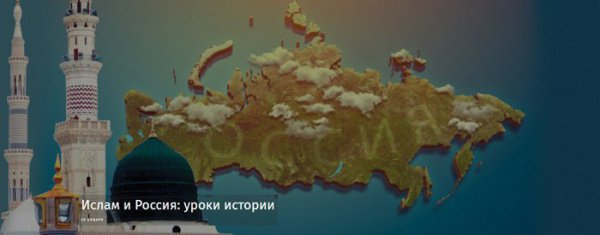Preview photo: S. Prokudin-Gorsky
“Fabric Merchant. Samarkand. 1913”
The second half of the 16th century was a turning point not only in the history of Muslim peoples but also in the history of the Russian state itself. Muslim peoples lost their sovereignty and Russia became not just a multi-national but a multi-confessional state.
After the loss of its institutions in Russia, Islam became a “popular” religion. It was connected with the fact that the layer of the feudal aristocracy and intellectuals, who, as a rule, were the bearers of systematic religious knowledge, was very insignificant among Muslims in that period of time. Feudal elite was mainly liquidated back in the 50-60-s of the 16th century during popular mutinies. The part of those, who served the Tsar, gradually dissolved in the appropriate segments of the Russian society. The destruction of mosques, the closure of educational institutions, the persecution of clergymen, the lack of any system of public education caused a dramatic clergy decline. Those who managed to survive and adapt to the new conditions could realize themselves only within their religious community.
In order to preserve the basis of the traditional society, Muslims tried to use those structures which were not destructed right away and which were the part of people’s spiritual. For instance, the role of such an ancient social institution as the Djien increased among Tatars. In the 16th-18th centuries the position of Sufism, which contributed to the cohesion of the Muslim Ummah in the face of the external danger and internal instability, was significantly strengthened. The revival of Sufi traditions was aimed at the identifying and using inner resources of people and their spiritual wealth. There was hidden a very powerful ideological force behind the external social passivity of Sufism. That force helped Muslims to overcome invasions, devastation and humiliation and remain themselves. Sufism partially filled the ideological, political and socio-structural vacuum, which existed in the Muslim community in the 16th-18th centuries.
In the 16th-18th centuries Islam ensured a certain measure of stability to Russian Muslims. Without preventing the society from upheaval, it helped to preserve elements of the traditional social structure and prolong the cultural tradition. The remaining religious institutions ensured reconciliation of social and politically heterogeneous elements and made self-organization of the Muslim community possible.

Read also Islam and Russia: Hitory lessons
But by the middle of the 18th century it had become obvious that the processes within the Muslim community and Russian society as well, required fundamental changes in the state and confessional relations. The active participation of Muslims of Central Russia in peasant wars and religious movements, new tendencies in the development of Islam in the North Caucasus which were connected with the desire to establish Sharia Laws among mountain dwellers and institutionalize Sufism, contributed to the fact that the Russian government, especially under the reign of Catherine II, realized that the Muslim society which was functioning mainly on the principles of Islam, remained a rather serious potential hotbed of separatism within Russia. In that regard, it was necessary to develop mechanisms for involving Muslims into the Russian state system which would be more effective than Christianization through violence.
The creation of Spiritual Governance for Muslims in 1788 became the official recognition of the Muslim community in Russia. It turned over a new leaf within Islamic and state relations in the country. By 1889 there were 7203 members of the clergy in 4222 congregations in the territory under the jurisdiction of the OMSA, including 60 akhoonds, 2734 imam-khatibs, 2621 imam-mudarrises and 1873 muezzins. By that period there had been more than 6000 mosques in the territory of the Russian Empire. By 1742 only 118 mosques had existed. In 1833 there were already 4785 of them.
Raphik Muhametshin “Spiritual heritage of Russian Muslims”
